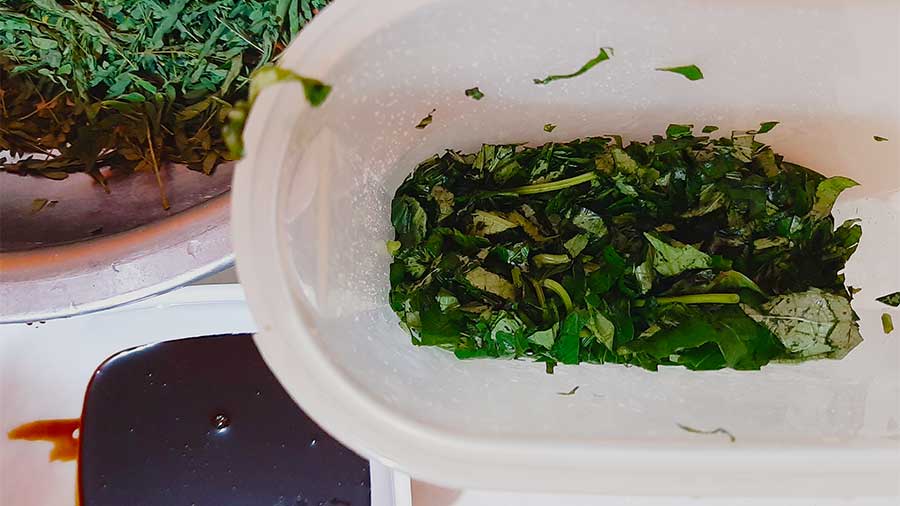In terms of fertilizing your plants at home, there are so many things that you can use, organically. If you have read my blogs, you’ll know that I have been using a variety of organic materials such as carrots, bananas, garlic, and many more. I even wrote an article on how I use dead fish as fertilizer.
In this article, I will focus on using a very cost-effective fertilizer based on Korean technology. It is called Fermented Plant Juice or FPJ. Korean Natural Farming is a sustainable system developed by the Janong Natural Farming Institute in South Korea. Basically, it encourages you to use crops or plants that you can find locally so that you can save on fertilizer costs. Being cheap to produce is just one of the many benefits of using Fermented Plant Juice.
What is Fermented Plant Juice?
FPJ is an organic concoction made from plant material, preferably young shoots of vigorously growing plants, which are made to ferment with the aid of molasses or brown sugar. The molasses or brown sugar serves as a food source for the beneficial microorganism, sometimes called indigenous microorganisms or IMO, which in turn breaks down the plant material to extract precious nutrients. The weak alcohol produced during fermentation extracts chlorophyll and other plant components such as growth hormones.
The fermentation process can take from 7 days up to a month. Simply put, we are extracting the nutrients present in the plant material so we can use it as fertilizer.
Recommended Plants to use as FPJ
The best plants to use are the fast-growing types. This makes sense as you want to extract this “fast-growing” property and use it to fertilize your other plants. It is best to use the shoot tips of these plants. Here is a table of plants that are excellent for making FPJ along with some of its nutrient content (nutritionvalue.org).
Common Name | Potassium | Phosphorus | Calcium | Magnesium |
Sweet potato | 508 mg | 81 mg | 78 mg | 70 mg |
Squash | 459 mg | 93 mg | 21 mg | 33 mg |
Cucumber | 136 mg | 21 mg | 14 mg | 12 mg |
Watercress | 606 mg | 76 mg | 81 mg | 38 mg |
Snap Beans | 211 mg | 38 mg | 37 mg | 25 mg |
Seaweed | 63 mg | 157 mg | 72 mg | 144 mg |
*nutrient content per 100 grams
You are not limited to these plants, as long as it is not poisonous or the woody type. You are encouraged to use locally-grown plants or even weeds or grass. Green, leafy vegetables such as spinach are also a good choice. Any plant from the cucurbit family is also a good choice, such as pumpkin and zucchini. Seaweed is also known as a good source of organic fertilizer. For all other plants, it is highly recommended to use its shoot tips. If it is not of the vine variety, you can just use the leaves.
Avoid collecting plant parts during or just after a rainfall. Rain washes away the beneficial microorganisms needed for the fermentation process. It is good to wait for about 2 sunny days before collecting. Once you have collected the plant parts you need, do not rinse them, as you would also wash away the microorganisms.
Phosphorus is needed for good root development. Potassium is needed for flower and fruit setting. Calcium strengthens the cell walls of a plant making it sturdy. It also prevents fruits and flowers from falling off the plant. Magnesium helps keep the foliage green, thus helping in the photosynthesis process. It also increases the nutrient absorption of the plant.
Aside from these nutrients, these plants are also rich in growth hormones. Growth hormones help in cell division and elongation spurring plant growth. Auxin, which is a growth hormone, is needed in the rapid growth of plant shoot tissue, young leaves, and seed germination. It also promotes root growth. Some growth hormones can be found in most rooting compounds used in cuttings for plant propagation.
How to Make the Fermented Plant Juice
To make my FPJ, I am using sweet potato leaves that are growing in my backyard. I also have a stock of molasses, so I will be using it instead of brown sugar.
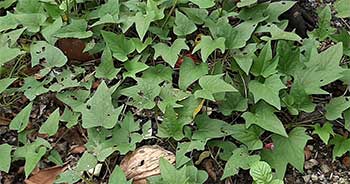
Step 1. Cut the plant material into small pieces.
You can cut the leaves or shoots into 1-2 inch strips. Always remember, do not rinse the plant material. You will need the beneficial microorganisms living on the surface. These microorganisms are responsible for the fermentation process. They break down the plant material to release nutrients and growth hormones.
It is also important to take note of the total weight of all the plant material as the amount of molasses will depend on it. Place the plant strips on a glass or plastic container. Do not use metal containers as this will react with your mixture.
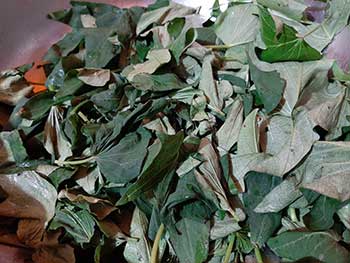
Step 2. Add the molasses.
The ratio is 1:2. For every 1 part of molasses, use 2 parts of plant material. For example, if you have 200 grams of plant material, use 100 grams of molasses. Mix thoroughly. It is advisable to use a clear container so you can observe the mixture properly while it is fermenting.
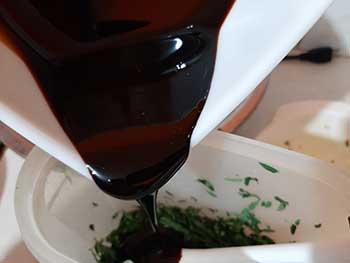
Step 3. Seal the container.
The mixture should not be exposed to open air because it will attract flies and insects. If left open, insects may lay eggs on your mixture. Within a few days, you may have maggots lurking in your mixture. You do not want this to happen. Seal the container tightly. Make sure the mixture does not occupy more than two-thirds of your container.
During the fermentation process, gases will be released and if space is not enough, pressure will build up which may cause your container to explode. Just to be sure, you can open the container every 2 days to release the gases then cover it again.
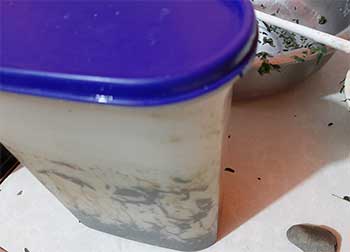
Step 4. Place the mixture in a cool, dry area away from direct sunlight.
Check on your mixture periodically. Molds may appear in a few days. If the molds are whitish or yellowish in color, then it’s ok. If the olds are black or grayish, then you will have to discard the mixture. It is deemed a failure. The mixture may have been contaminated during the process. Make sure to use clean materials in making the FPJ. Depending on the temperature and humidity, you can harvest the FPJ in 7 days to 1 month. The more humid the weather, the faster the fermentation process.
Try to check your mixture on the 7th day. You will know that the fermentation process is occurring because the mixture will have a faint alcohol smell to it. This is due to the breakdown of chlorophyll.
One way to know if the fermentation is complete is when the plant material floats and the liquid is settled at the bottom of the container. I harvest the FPJ on the 3rd week, just to be sure that the process is complete.
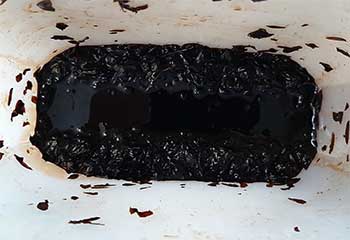
Step 5. Separate the solid plant material from the liquid.
Once the fermentation is complete, it is now time to harvest it. You just need the liquid part of the mixture. To separate them, I just use a strainer. You may also squeeze the remaining plant material to extract the liquid. The solid parts can be used as compost.
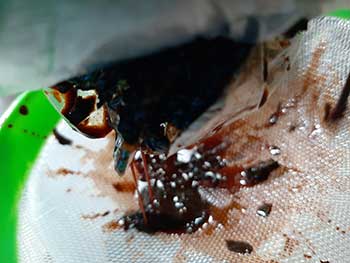
Make sure to store the liquid in a glass or plastic container. Seal properly. However, the microorganisms may still produce gases, so it is good to open the container every few days. If stored properly, you can store this mixture for up to a year. Although, the best results can be obtained in the first month of usage.
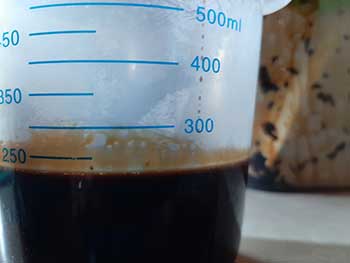
How to use Fermented Plant Juice on Plants
To use FPJ as fertilizer, it must first be diluted with water. Once it is diluted, it can be used as foliar spray or as a soil drench. The proper ratio is 10 ml per liter of water. When using as a foliar spray, make sure to spray in the late afternoon as the plants’ stomata are open. In this way, the liquid fertilizer is readily absorbed by the plant. You can also prevent plant damage such as leaf burn when spraying in the late afternoon.
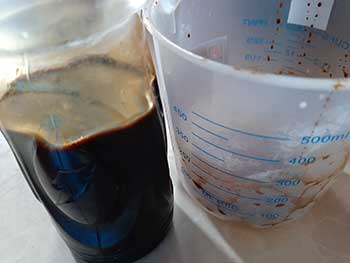
FPJ made from leaves, shoot tips are ideal to use in the vegetative phase of the plants. This is the phase just after seed germination and before it starts to flower.
You can apply the Fermented Plant Juice fertilizer once per week.


